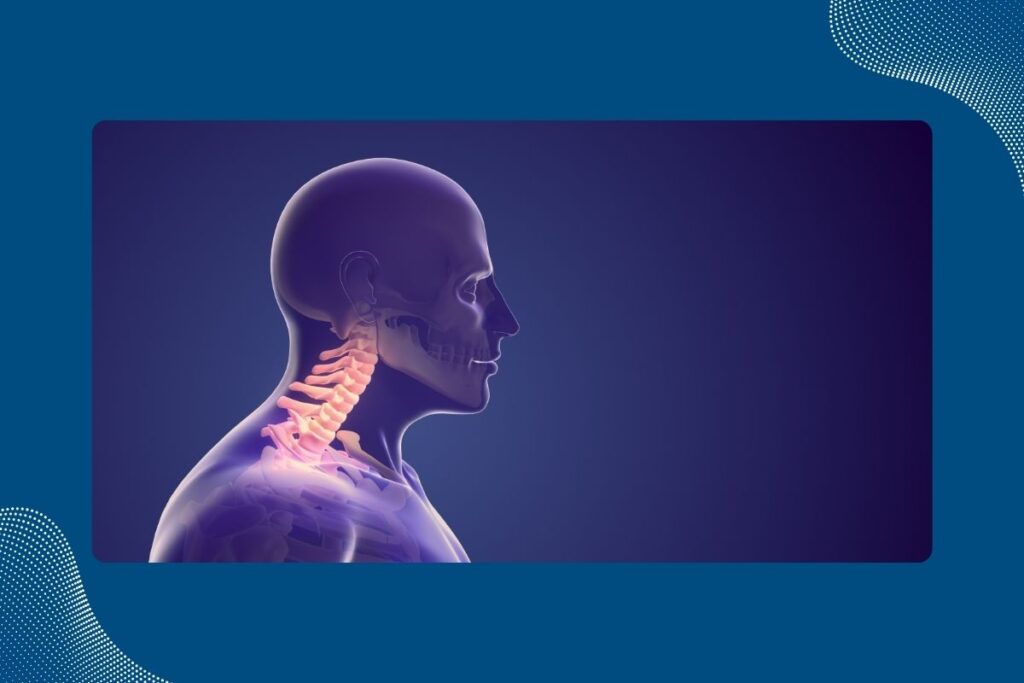How to Fix Forward Head Posture

In today’s tech-driven world, forward head posture (FHP) has become increasingly common due to prolonged screen time and poor ergonomics. This condition, characterized by the head jutting forward from its neutral alignment, can lead to various health issues. In this blog, we will explore what forward head posture is, its causes, and effective methods to correct it.
Understanding Forward Head Posture
Forward head posture occurs when the head aligns in front of the body’s center of gravity, leading to a hunched appearance. Symptoms include neck pain, shoulder tension, and frequent headaches. Over time, this posture can cause chronic discomfort and exacerbate other health issues.
Causes of Forward Head Posture
Several factors contribute to forward head posture, including:
- Prolonged computer or smartphone use: Hours spent looking down at screens.
- Poor ergonomics at the workstation: Improper desk setups.
- Sedentary lifestyle: Lack of movement weakens muscles.
- Muscle imbalances: Weak neck and upper back muscles.
Negative Effects of Forward Head Posture
Forward head posture can severely impact your physical health. Common issues include:
- Chronic Pain: Persistent neck, shoulder, and back pain.
- Reduced Lung Capacity: Compressed chest reduces breathing efficiency.
- Spinal Misalignment: Poor posture affects overall spine health.
The mental toll of forward head posture includes:
- Increased Stress: Tension in the neck and shoulders.
- Self-Esteem Issues: Poor posture can negatively affect body image and confidence.
Assessing Your Posture
Self-Assessment Techniques
You can evaluate your posture using simple methods:
- Wall Test: Stand against a wall; notice if your head touches the wall naturally.
- Mirror Test: Observe your side profile in a mirror.
- Photo Assessment: Take a side-view photo to analyze alignment.
Professional Assessment
For a thorough evaluation, consider seeing a professional:
Physical Therapist or Chiropractor
Experts like physical therapists or chiropractors can provide a detailed analysis of your posture. They have the knowledge and experience to identify specific issues and create a tailored treatment plan to correct forward head posture. Additionally, consulting with an orthopedic spine specialist can offer further insights and specialized care for complex cases of postural problems.
Diagnostic Tools
Professionals use specific tools and techniques to measure posture accurately. These may include posture analysis software, goniometers, and visual assessments, which help in diagnosing the severity of the posture issue and monitoring progress over time.
Exercises and Stretches to Correct Forward Head Posture
Strengthening Exercises
Building muscle strength is crucial for correcting forward head posture:
- Chin Tucks: Gently pull your chin back to align with your spine.
- Neck Extensions: Extend your neck backward while keeping your spine straight.
- Scapular Retractions: Pull your shoulder blades back and down.
Stretching Exercises
Stretching tight muscles helps restore proper alignment:
- Upper Trapezius Stretch: Gently pull your head to one side.
- Levator Scapulae Stretch: Turn your head to the opposite side and tilt downward.
- Pectoral Stretch: Stretch your chest muscles by clasping hands behind your back and lifting.
Daily Routine Integration
Incorporate these exercises into your daily routine for best results:
Morning and Evening Routines
Set aside time in the morning and evening for posture exercises. These dedicated sessions can help establish a consistent habit, ensuring that your muscles are regularly strengthened and stretched to combat forward head posture.
At Work
Perform stretches during breaks to counteract prolonged sitting. Integrating quick and simple exercises into your workday can significantly reduce tension and prevent the negative effects of maintaining a forward head posture for extended periods.
Tips to Prevent Forward Head Posture
Workstation Setup
Optimizing your workstation can significantly improve posture. Ensure the top of your monitor is at or slightly below eye level to avoid straining your neck. Use a chair with proper lumbar support to maintain the natural curve of your spine. Keep your keyboard and mouse at a comfortable height and distance to prevent unnecessary reaching or slouching, promoting better overall posture throughout the day.
Reduce Your Screen Time
Minimizing screen time can alleviate strain on your neck and improve posture. Follow the 20-20-20 rule—every 20 minutes, look at something 20 feet away for 20 seconds to give your eyes and neck a break. Use apps to monitor and limit your screen time, helping you stay aware of your usage. Additionally, engage in alternative activities like reading or walking to reduce your reliance on screens and promote a healthier lifestyle.
Lifestyle Changes
Incorporating physical activity into your daily routine can significantly help maintain good posture. Regular exercise, including activities like yoga, pilates, and strength training, strengthens the muscles that support proper alignment. Additionally, staying active throughout the day helps prevent muscle stiffness and promotes a healthier, more upright posture.
Mindfulness and Awareness
Being conscious of your posture is key to improvement. Setting reminders to regularly check and correct your posture can help you stay aware of your alignment throughout the day. Additionally, using posture-correcting devices can assist in maintaining proper alignment, providing support and feedback to help you develop better posture habits.
Key Takeaways
Forward head posture is a common issue that can lead to significant health problems if left unaddressed. By understanding the causes and effects of this posture and implementing the exercises, ergonomic adjustments, and lifestyle changes discussed, you can improve your posture and overall well-being. If needed, seek professional help to guide you on your journey to better posture.